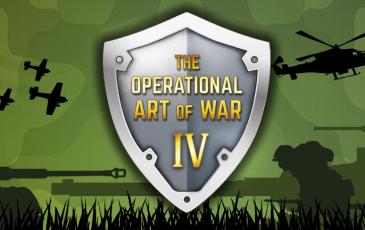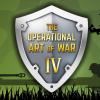Sichelschnitt - Century of Warfare, TOAW III, and TOAW IV

| Rating: | 2.35 (2) |
| Games Played: | 1 |
| SM: | 7 |
| Turns: | 90 |
| Type: | Custom |
| First Side: | Axis |
| Second Side: | Allies |
| Downloads: | 171 |
Sichelschnitt
The campaign in France and Belgium, May-June 1940
Version: 1.1
1. Victory
In order to win the Germans must take and hold Paris -- the hex with Reynaud in it -- for one turn.
If they fail to do this by turn 90 -- June 23 -- then the Allies are victorious.
2. Unit Colors
2.1. German
- White on Grey Wehrmacht
- Black on Grey SS
- Dark Grey on Grey Panzertruppen
- Blue on Grey Luftwaffe
2.2. Allies
- Red on Brown: British
- Lt. Blue on Brown: R.A.F.
- Green on Yellow: Belgium
- Lt. Blue on Yellow: Belgian A.F.
- White on Blue: Metropolitan France
- Bright Red on Blue: Zouaves
- Dull Red on Blue: Poles
- Blue on Blue: Foreign Legion
- Dark Blue on Blue: French A.F.
- Dark Blue on Lt. Blue: Senegal
- Green on Lt. Blue: Algerian
- Off-White on Lt. Blue: Tunisian
- Blue on Lt. Blue: Moroccan
- White on Lt. Blue: 'White' Colonials
3. Supply
Due to the 9 month period before the fighting began the stockpiles of both sides are at a plush 40. After five days of fighting the fat is assumed to be exhausted: at that time the German stockpile is reduced by 7 and the Allied stockpile by 10.
The Germans have several 100% supply points along the Eastern edge. On turn 8 it is assumed the Netherlands has surrendered and at that time a 75% German supply point appears near Eindhoven.
The Allies have a 100% supply point at Paris; a 75% point at the port of Antwerp; and 50% points at Brussels, Calais and Boulogne.
The loss of any of the Allied supply point causes a corresponding loss to their force stockpile of 1. Note that lost supply points do not return -- they are assumed to be wrecked or pillaged. The Allied stockpile is also diminished by one for the loss of the manufacturing centers in Lille and Roubaix.
4. Replacements
German:
The SS and Panzertruppen receive them at HIGH; all other units at NORMAL.
Allies:
Once mobilized there were not many men of military age left in Belgium, and so they receive replacements at a VERY LOW rate. For obvious reasons, so do the Poles. The British (with the exception of the R.A.F. ) and French Colonials -- which includes all units on a Lt. Blue background plus the Zouaves and Foreign Legion -- are set at a LOW rate: it takes time to gather and ship the required men and equipment to France. Metropolitan French and R.A.F. units are NORMAL.
The loss of the manufacturing centers in Lille and Roubaix each cost the Allies a 5% drop in their replacement rate.
5. Unit Reconstitution
German: All German units reconstitute normally and appear below Bonn.
Allies: Only Metropolitan French and RAF units reconstitute and they mostly appear near Paris.
6. Other Significant Events
- Netherlands Surrender: This occurs on turn 8. As already mentioned, a 75% German supply point appears near Eindhoven at this time. In addition, the exclusion zone at the top of the map disappears and on turn 9 German units begin appearing there.
- Ghent Captured: One turn after the capture of Ghent the Belgians will surrender and their army and air force will be withdrawn.
- Germans approach Dunkirk: If the Germans get within 50 km of Dunkirk (20 hexes), then the B.E.F. will begin to evacuate. Two turns after the Germans reach the 50 km tripwire all British units, including the R.A.F. , will be withdrawn.
7. The Programmed Opponents
A relatively competent PO has been created for both sides. (It's 'relative' because no AI is as clever as a human.) In addition, the PO for each side selects from a limited set of strategies which it will follow for any given game. It might chose the historical one, such as the 'Dyle Plan' for the Allies, or it might do something entirely different. The PO can, however, be forced to use its historical variant by setting the OAOW Variable Scenario switch to OFF.
8. Shock
- AIR: The Luftwaffe had a good plan well-executed the first day of the battle and so receive shock 105 for 2 turns. The allies, hampered by a crazed chain of command and the overall lack of a joint air plan, are at shock 90 for 2 turns.
- GROUND: Even though they had 9 months to get ready, the 'Drole de Guerre' had sapped Allied alertness. Allied shock is 85 for the first 2 turns.
9. Rail
German rail is 5000 throughout the game. The French rail system was paralyzed by the Luftwaffe on Day one and so they start at zero. Slowly the Allied rail-net will make its way up to 5000, but then it will start to decrease again as the air war goes against them.
There wasn't a whole lot of tearing up of rails that went on in the West. (In general, it was a much more civilized -- in as much as that word can be used in relation to war -- affair than what occurred in Russia.) The Germans, therefore, have only a 15% chance of damaging rail hexes and the allies a 10% one. The Germans automatically repair 1 rail hex a turn and the allies 2.
10. Eben Emael
The game begins with the glider operation to capture Eben Emael already having taken place. Sturm group Koch, therefore, may be found in the fortress on turn 1, waiting for the rest of the German army to arrive.
11. Thoughts On Strategy
11.1. German
The first thing to realize is that, unless the Allies opt for the full Dyle plan, things are not likely to go so well as they did during the actual campaign of 1940. Both the PO and a fellow human may have the advantage of hindsight. Besides, the Germans had a lot of what could be called luck going their way. (An adherent of V. Clausewitz might say that the forces of friction worked more against the Allies than they did against the Germans.) There are two advantages that you have that should not be overlooked: the Luftwaffe and free use of the rails throughout the game. Keep an open mind: if a historical route becomes blocked think about shifting some divisions to somewhere that isn't: after all, the Allies can't be strong everywhere, no matter what plan they follow. Consider that you can get to Dunkirk through Antwerp, Ghent and Bruges as well as the routes that pass through Sedan or Dinant.
Through a concerted policy of Airfield Attack carried out over, say, 10 turns the Luftwaffe can pretty much destroy the Allied Air Forces. It is difficult to say whether this is wise. It has at least two drawbacks: 1) During this interval the Allies will have free use of the rail and road net and thus will be able to get unmolested to where they need to go and 2) the losses incurred by the Luftwaffe will be significant, so much so that what remains will certainly have a diminished impact on operations. Elmer almost always chooses this option in any scenario where it thinks its Air Superiority level suffices.
11.2. Allies
You don't have a chance of winning the air war, which means that moving during the A.M. turns, particularly by rail, is going to cost you. In particular you may want to consider moving weak units like HQ's only at night. You must, however, regardless of interdiction fright get some strong units to the Givet/Dinant area quickly. As was the case in the real campaign, there is nothing of yours there when the game begins and it is a certainty that the Germans, whether controlled by the PO or a human, will be racing towards the area. Before rejecting Gamelin and his 'silly' plan out of hand, consider that 1) The Belgians cannot hold the Germans on the Dyle and Albert Canal line alone and that 2) The Germans can get to Dunkirk via a Northern as well as a Southern route. If your opponent goes after your Air Force, do not despair: what will be left of his afterwards will not be able to do you much harm. Your only defense against this tactic is to move what can be moved out of range of the 109's. Make sure you have fighters in the stacks at whatever new homes you choose.
11.3. Poetic License
In several places I have, in order to increase play-balance, taken some liberties with distances between strategic points.
11.4. Change List
- (1.1) Made the allied PO aware of a possible German end-around using the bottom of the map.
- (1.1) Changed several of the French fortified sectors to begin the game dug-in at various levels.
- (1.1) Improved German PO: specifically, made it more aggressive during the early part of the campaign.
- (1.1) Changed Icon Tint for the Western Allies.
| Player Voting Stats | ||
|---|---|---|
| Member | Balance | Enjoyment |
| Totally Pro Axis | 5 | |
| Totally Pro Axis | 4 | |
| Gaming Records | |||||||||
|---|---|---|---|---|---|---|---|---|---|
| 1st Side Player | 2nd Side Player | Result | Score | ||||||
 |
Gotthard H | vs. | KG_RangerBooBoo |  |
Axis Overwhelming Victory | 77 | 14 | ||
After the Luftwaffe destroyed the allied airforces, then their bridges, movement was nearly impossible for the allies and their supply was reduced. The Wehrmacht only had to keep pressing until the weak areas gave way.
The Luftwafffe is too powerful and once it has destroyed the Allied air forces it can destroy all bridges and then be set to interdiction and ravage any allies movement.






















